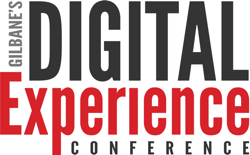Gilbane’s Digital Experience Conference
Washington DC April 28 – 29, Workshops May 1
The easiest way to deal with the vast number of marketing technology tools for digital experience initiatives is to narrow your scope by identifying the type of solution that most directly addresses your core requirements. You can then build around this hub with supporting integrations. For example, you might start with a CMS and then integrate CRM, or e-commerce. Though a sensible strategy, this is easier said than done because of shifting product scope and confusing marketing. In this presentation you’ll hear what the Business Development Bank of Canada learned on just such a journey.
A101. CDP or Multi-Channel Hub? A Martech Journey
This is the journey of a bank that was looking for the new shiny thing, a customer data platform, and ended up choosing a multi-channel marketing hub. How did it happen? What did we discover along the way on our journey about these types of tools? We follow through the steps of this discovery voyage where not a lot of people have gone before … (Hey, it sounds like a new Star Trek episode!).
Monday, April 29: 10:30 a.m. – 11:15 a.m.
Richard Tea
Director, Analytics & Marketing Automation
Business Development Bank of Canada
Learn more & use code FG19 for best available price
Diamond sponsors
Platinum sponsors
Gilbane Conferences have been providing content, computing, and digital experience professionals with trusted content since 2002.






















